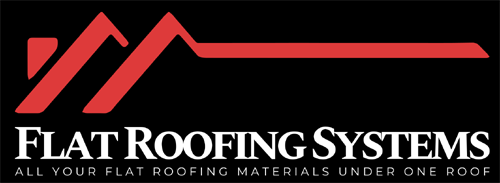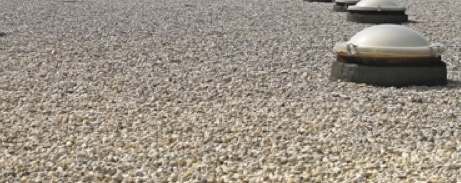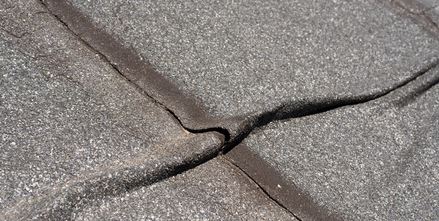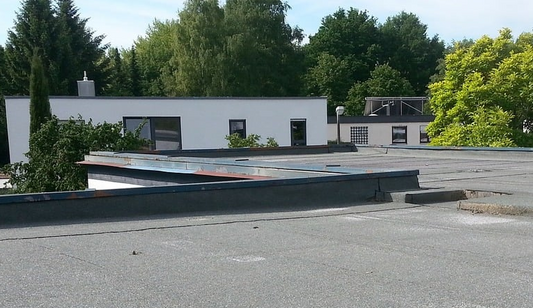EPDM offers lower initial costs (£15.66/m²), DIY-friendly installation, and excellent flexibility with 600% elongation capacity. GRP provides superior weatherproofing, aesthetic versatility with customizable colors, and better long-term value despite higher upfront investment (£19.89/m²). EPDM incorporates recycled materials and remains recyclable, while GRP has limited eco-credentials but excels in durability. Your choice depends on budget constraints, installation expertise, and whether you prioritize immediate savings or extended performance.
Key Points
- EPDM offers greater flexibility and DIY-friendly installation at a lower initial cost (£15.66/m²) compared to GRP (£19.89/m²).
- GRP provides superior aesthetic versatility with customizable colors and complex shapes, while EPDM has limited design options.
- EPDM excels in temperature variation adaptability with 600% elongation capacity, but GRP offers better rigidity and leak detection.
- GRP typically requires less maintenance over time, making it more cost-effective despite higher upfront investment.
- EPDM is more environmentally friendly with recycled content and end-of-life recyclability, while GRP has limited sustainability credentials.
What Are EPDM and GRP Roofing Systems?
Roofing innovations have transformed the flat roof market with two leading contenders: EPDM and GRP systems.
EPDM (Ethylene Propylene Diene Monomer) is a synthetic rubber roofing system that delivers exceptional waterproofing capabilities and flexibility. Available in rolls, it's more DIY-friendly and cost-effective upfront, with a 25-30 year lifespan.
EPDM rubber roofing combines superior waterproofing with flexibility, offering DIY-friendly installation and impressive longevity at an affordable price point.
GRP (Glass Reinforced Plastic) roofing utilizes a composite material combining polyester resin and glass fibers to create a lightweight yet robust flat roofing solution. While requiring a more complex installation process involving multiple layers, GRP matches EPDM's durability with an equivalent 25-30 year service life.
Both roofing systems offer seamless installation that minimizes leak risks, providing superior alternatives to traditional felt roofing materials with their enhanced durability and performance characteristics.
Physical Composition and Material Properties
EPDM's molecular structure consists of ethylene and propylene monomers cross-linked with diene, creating a flexible membrane with 600% elongation capacity that won't crack under thermal cycling.
GRP's composition combines glass fiber reinforcement with polyester resin, yielding superior strength-to-weight properties that can withstand significant structural loads and resist punctures.
Your roofing decision should account for these material differences, as EPDM provides exceptional UV and ozone resistance for up to 50 years, while GRP offers superior weatherproofing against chemical exposure and traffic damage.
Molecular Structure Differences
When examining the foundational molecular structures, we find that EPDM and GRP roofing systems differ markedly in their chemical composition and resulting physical properties.
EPDM's molecular structure consists of ethylene-propylene chains with diene crosslinks, enabling remarkable flexibility with up to 600% elongation capacity and superior resistance to thermal movement.
In contrast, GRP derives its properties from its composite nature:
- Glass fibers provide structural reinforcement, delivering superior puncture resistance compared to EPDM
- Polyester resin matrix creates a rigid, waterproof barrier with excellent chemical resistance
- The fiber-resin bond creates a unified material that maintains structural integrity in diverse environments
These molecular differences directly impact your roofing solution's performance, with EPDM offering superior flexibility for contraction/expansion cycles, while GRP provides enhanced durability against physical and chemical damage.
Weatherproofing Capabilities
The fundamental weatherproofing capabilities of both EPDM and GRP systems stem directly from their unique physical compositions, offering distinct advantages depending on your specific project requirements.
EPDM roofing delivers exceptional flexibility with its 600% elongation capacity, accommodating thermal expansion without compromising integrity. You'll find its large-sheet application minimizes seams, reducing potential leak points during the installation process.
GRP flat roofing creates a truly seamless membrane through its glass-fiber reinforced polyester structure, providing superior weather resistance in complex architectural designs. Its rigid bonding to substrates facilitates easier leak detection compared to EPDM systems.
Both materials deliver impressive roof longevity of 25-30 years, though GRP typically demonstrates superior real-world waterproofing capabilities. When UV resistance is critical, GRP's inherent protection generally outperforms EPDM, making it preferable for highly exposed applications.
Strength-to-Weight Ratio
While comparing flat roofing materials, GRP's superior strength-to-weight ratio stands out as a critical differentiator in commercial applications where structural load considerations affect system selection.
GRP flat roofing maintains excellent waterproofing capabilities while offering the structural integrity needed for high-traffic areas.
- GRP's composite construction delivers outstanding durability and corrosion-resistant properties without sacrificing its lightweight nature.
- EPDM roofs provide flexibility that accommodates expansion and contraction during temperature fluctuations, though they lack GRP's inherent structural strength.
- You'll find GRP can be custom-molded into complex shapes while maintaining its strength-to-weight advantages, whereas EPDM is limited to flat sheet applications.
When selecting between these systems, you're balancing GRP's superior structural properties against EPDM's environmental adaptability, with each offering distinct performance characteristics under different conditions.
Durability and Expected Lifespan
Both EPDM and GRP roofing systems offer impressive longevity specifications, with each providing 25-30 years of service life under standard conditions. EPDM's elasticity contributes to its resilience during temperature fluctuations, potentially extending its lifespan to 50 years with proper maintenance. GRP's exceptional weathering resistance makes it ideal for harsh environments and high-traffic areas.
| Durability Factor | EPDM | GRP |
|---|---|---|
| Average Lifespan | 25-30 years (up to 50) | 25-30 years |
| Puncture Resistance | Vulnerable | Highly resistant |
| Weather Resilience | Excellent flexibility | Superior hardness |
| Maintenance Requirements | More frequent | Minimal |
| Repair Frequency | Higher | Lower |
You'll find GRP typically requires fewer repairs throughout its service life, while EPDM may need more vigilance to address potential punctures and maintain peak longevity.
Installation Process and Complexity
When comparing installation processes, EPDM rubber roofing membranes emerges as the more accessible option for property owners seeking DIY solutions. The EPDM installation involves rolling out single sheets and adhering them to your roof surface, making it considerably less complex than GRP installation, which requires multiple layers of resin, fiberglass mat, and topcoat application.
Consider these key differences:
- EPDM can be installed in various weather conditions, while GRP requires dry conditions for proper curing.
- You'll complete an EPDM project faster due to minimal drying times compared to GRP's layered approach.
- Self-correction is more feasible with EPDM if mistakes occur during installation.
For ideal results with GRP installation, you'll need experience or professional assistance due to its technical complexity. Proper installation guarantees warranty validity and maximum system performance regardless of your choice.
Cost Comparison: Initial Investment vs. Long-Term Value
Beyond installation considerations, cost factors greatly impact your roofing system selection. EPDM systems offer a lower initial cost at approximately £15.66/m² (ex VAT), making them attractive for budget-conscious projects.
In contrast, GRP systems require a higher upfront investment, with kits like the Cromar ProGRP costing around £19.89/m².
However, when evaluating total lifecycle expenses, GRP roofing systems demonstrate superior long-term value. With proper installation, GRP's exceptional durability extends its lifespan beyond 30 years, while minimizing maintenance requirements.
EPDM systems often incur higher cumulative repair costs due to challenging leak detection and more frequent interventions.
Though your project's initial budget may favor EPDM, GRP's robust performance and reduced maintenance needs typically deliver greater cost-effectiveness over the roofing system's lifespan, potentially avoiding premature replacement expenses.
Maintenance Requirements and Repair Considerations
Maintaining your roofing system effectively determines its functional lifespan and overall performance value. Both EPDM and GRP roofing offer impressive durability with 25-30 year lifespans, but differ considerably in maintenance approaches.
EPDM provides cost-effective repair solutions using accessible patching kits, though leak detection can be problematic. GRP's structural integrity typically necessitates fewer repairs but requires specialized expertise when maintenance is needed.
EPDM offers affordable, accessible repairs while GRP demands fewer interventions but specialized skills when problems arise.
- EPDM maintenance benefits from simple repair procedures and UV resistance, though hidden leaks may cause extensive damage before detection.
- GRP roofing allows for easier damage assessment with clearly visible problem areas, facilitating targeted repairs.
Thorough maintenance protocols for both systems should include bi-annual inspections focusing on seams (EPDM) or surface integrity (GRP).
Weather Resistance and Performance in Extreme Conditions
Weather resistance capabilities markedly differentiate EPDM and GRP roofing systems when evaluating their performance under extreme conditions.
EPDM's exceptional UV resistance and remarkable 600% elongation capacity enable it to withstand significant thermal movement without cracking in fluctuating climates. You'll find this flexibility particularly advantageous in regions experiencing extreme temperature variations.
GRP roofing, conversely, excels with superior waterproofing capabilities and rigid durability, making it ideal for areas prone to heavy rainfall and storms. Its resistance to punctures provides enhanced performance under heavy usage conditions where EPDM might be vulnerable.
Both systems offer comparable lifespans of 25-30 years when correctly installed, ensuring long-term weather resistance.
Your choice ultimately depends on specific environmental challenges: EPDM for thermal fluctuations and UV exposure; GRP for high rainfall areas requiring superior load-bearing performance.
Aesthetic Appeal and Design Flexibility
When selecting a roofing system for your property, you'll find GRP offers superior aesthetic versatility with its smooth surface, customizable topcoat colors, and ability to be molded into complex shapes.
EPDM provides more limited design options but does come in both black and white variants, with the latter offering energy efficiency benefits through sunlight reflection.
Your decision between these systems may ultimately hinge on whether visual appeal takes priority over purely functional considerations in your specific roofing application.
Visual Impact Comparison
The visual impact of your roofing system plays a significant role in your property's overall aesthetic value.
While EPDM roofing offers practical functionality with its uniform black membrane and custom sizing capabilities, GRP flat roofs provide superior design flexibility with numerous decorative finishes. GRP's glossy finish enhances visual appeal while providing additional UV resistance for long-term appearance retention.
When comparing visual elements, consider:
- GRP can be molded to integrate seamlessly with complex architectural features
- EPDM's simplistic appearance limits creative expression despite its functional benefits
- GRP systems accommodate insulation incorporation without compromising aesthetics
For projects where aesthetics are paramount, GRP's ability to conform to various shapes and offer multiple color options makes it the preferred solution for architecturally demanding applications, while EPDM serves utilitarian requirements effectively.
Customization Options Available
Customization flexibility serves as a critical differentiator between EPDM and GRP roofing systems for property owners seeking aesthetic cohesion with their architectural vision.
EPDM offers practical options with black and white variants—the latter providing enhanced reflectivity for improved energy efficiency. Your EPDM installation can be custom-cut to minimize seams, creating a cleaner aesthetic while maintaining functionality.
GRP systems deliver superior design versatility, allowing you to implement complex roof structures with a seamless finish. The material can be molded into various shapes and comes in multiple color options and finishes to complement your property's architectural style.
Both roofing systems integrate effectively with insulation materials, enabling you to achieve thermal performance without compromising visual appeal.
When selecting between EPDM and GRP, consider how each system's customization capabilities align with your specific aesthetic and performance requirements.
Finish and Color Choices
Selecting the right finish and color for your roofing system greatly impacts both aesthetic appeal and building performance. GRP roofing systems offer superior aesthetic versatility compared to EPDM's limited color palette of primarily black and white. While EPDM's white variant delivers enhanced reflectivity for energy efficiency, GRP provides extensive design flexibility with numerous color choices and finishes.
- GRP's smooth, seamless finish creates a visually appealing surface that can be molded into complex shapes for both domestic and commercial applications.
- EPDM minimizes seams through custom sizing, reducing potential leak points, though it lacks the polished appearance of alternative systems.
- GRP's integrated insulation improves thermal performance while maintaining a streamlined aesthetic, with additional capacity for decorative edges and profiles that EPDM can't match.
For projects where appearance is paramount, GRP roofing systems typically deliver superior design options.
Environmental Impact and Sustainability
When evaluating roofing systems through an environmental lens, sustainability factors greatly impact long-term ecological footprints and compliance with green building standards.
EPDM roofing demonstrates superior eco-friendly attributes, incorporating recycled materials in production while offering a lifecycle exceeding 50 years with proper maintenance.
EPDM's recyclability at end-of-life presents a significant advantage in waste reduction strategies. This closed-loop potential minimizes landfill contributions, aligning with circular economy principles increasingly valued in construction specifications.
Conversely, GRP systems utilize polyester resin and fiberglass—materials requiring energy-intensive manufacturing processes that elevate their environmental impact.
Additionally, GRP's limited recyclability poses challenges for sustainable waste management protocols.
When prioritizing sustainability in your building envelope solutions, EPDM's thorough environmental benefits present compelling advantages over GRP alternatives.
Rounding Up
When selecting between EPDM and GRP systems, you'll need to balance your specific project requirements with budget constraints. EPDM offers cost-effectiveness and simple installation, while GRP provides superior durability and aesthetic versatility. Consider your roof's exposure conditions, anticipated lifespan, and maintenance capabilities. For challenging weather environments, GRP's seamless membrane may justify its higher initial investment through reduced lifecycle costs and extended service intervals.




